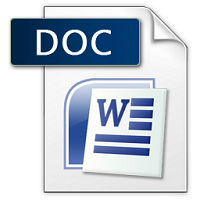₹198.00
Scroll down for Match your questions with Sample
Note- Students need to make Changes before uploading for Avoid similarity issue in turnitin.
Another Option
UNIQUE ASSIGNMENT
0-20% Similarity in turnitin
Price is 700 per assignment
Unique assignment buy via WhatsApp 8755555879
Description
| SESSION | AUGUST 2023 |
| PROGRAM | BACHELOR OF COMMERCE (BCOM) |
| SEMESTER | I |
| COURSE CODE & NAME | DCM1105 – PRINCIPLES OF BUSINESS
MANAGEMENT |
| CREDITS | 4 |
| NUMBER OF ASSIGNMENTS &
MARKS |
02
30 Marks each |
Assignment Set – 1
- Define manager. Describe the characteristics of the manager. 10
Ans 1.
Manager
A manager is an individual within an organization who is responsible for planning, organizing, coordinating, and overseeing various activities and resources to achieve specific goals and objectives. Managers play a pivotal role in the success of an organization by making critical decisions, setting direction, and ensuring that the organization’s resources are used efficiently and effectively.
Characteristics of a Its Half solved only
Buy Complete from our online store
https://smuassignment.in/online-store/
MUJ Fully solved assignment available for session SEPT 2023.
Lowest price guarantee with quality.
Charges INR 198 only per assignment. For more information you can get via mail or Whats app also
Mail id is aapkieducation@gmail.com
Our website www.smuassignment.in
After mail, we will reply you instant or maximum
1 hour.
Otherwise you can also contact on our
whatsapp no 8791490301.
- Discuss the characteristics of Planning in an organization. 10
Ans 2.
Characteristics of Planning in an Organization
Planning is a fundamental management function that involves setting objectives, determining the courses of action required to achieve those objectives, and making decisions to allocate resources effectively. Effective planning is critical for an organization’s success, and it exhibits several key characteristics:
Goal-Oriented: Planning always starts with the establishment of clear and specific goals. These goals provide direction and purpose for the organization and serve as the foundation for all planning activities.
Future-Focused:
- Differentiate between Formal and Informal organization. 10
Ans 3.
Formal Organization vs. Informal Organization
Formal and informal organizations are two distinct aspects of how people interact within an organization. They differ in terms of structure, purpose, communication, and hierarchy. Let’s explore the key differences between formal and informal organizations:
Formal
Assignment Set – 2
- Explain the characteristics of MBO (Management by Objectives). 10
Ans 4.
Management by Objectives (MBO) is a management approach that emphasizes setting clear, specific, and measurable objectives and then using these objectives to guide and evaluate the performance of individuals and teams within an organization. Developed by management theorist Peter Drucker in the mid-20th century, MBO has several key characteristics that make it an effective management tool:
Goal Setting: The
- Discuss the steps in staffing process in an organization. 10
Ans 5.
The staffing process in an organization involves identifying, attracting, selecting, and retaining qualified individuals to fill various positions within the organization. It is a crucial component of human resource management that ensures the right people are in the right roles. Here are the typical steps in the staffing process:
Human
- Explain the characteristics and qualities of Leadership. 10
Ans 6.
Characteristics and Qualities of Leadership
Leadership is a complex and multifaceted concept that involves guiding and inspiring individuals or groups toward the achievement of common goals. Effective leadership requires a combination of characteristics and qualities that enable individuals to influence and motivate others. Here are some key characteristics and qualities of leadership:
Vision: Leaders


